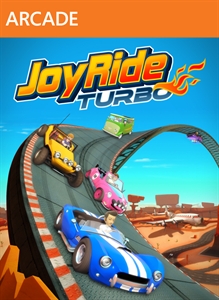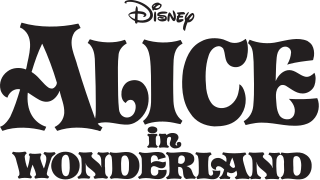
Adventures in the Magic Kingdom is a video game released in 1990 for the Nintendo Entertainment System. Its soundtrack was composed by Yoko Shimomura. The game was released in five different regions, using three different retail covers. The game places the player as a nameless main character, for whom the player can enter a name at the start of the game, into a hub-and-spoke Disney park heavily based on the company's Disneyland, Magic Kingdom, and Tokyo Disneyland parks. Goofy left the golden key for the castle gate inside, and Mickey Mouse asks for the player's help to find six silver keys needed to open the Cinderella Castle gate and allow the Disney parade to begin. After completing this task, Mickey congratulates the player and the parade begins.

Cars is a 2006 adventure racing game published by THQ. The game is based on the 2006 film of the same name. It was released for the PlayStation 2, GameCube, Xbox, Microsoft Windows, Game Boy Advance, Nintendo DS, and PlayStation Portable in June 2006, with versions for the Xbox 360 and Wii released later that year. The Wii version includes functionality geared towards its Wii Remote controller and was a launch game for the system. Taking place after the events of the film, the game follows Lightning McQueen as he participates in the new racing season with his goal set on finally winning the Piston Cup. While doing so, he races and trains with the local community of Radiator Springs.

Thrillville is a simulation and strategy video game developed by Frontier Developments that depicts theme park management, similar to RollerCoaster Tycoon. Thrillville is available for PlayStation 2, PlayStation Portable and, in North America, Xbox.

Toy Story Midway Mania! is an interactive 4-D theme park attraction, located at three Disney theme parks: Disney's Hollywood Studios at the Walt Disney World Resort, Disney California Adventure at the Disneyland Resort and Tokyo DisneySea at Tokyo Disney Resort.

Toy Story is an American media franchise owned by The Walt Disney Company. It centers on toys that, unknown to humans, are secretly living, sentient creatures. It began in 1995 with the release of the animated feature film of the same name, which focuses on a diverse group of toys featuring a classic cowboy doll named Sheriff Woody and a modern spaceman action figure named Buzz Lightyear.

Asobo Studio SAS is a French video game developer based in Bordeaux and founded in 2002. The studio is most known for developing video game adaptations of several Pixar movies, A Plague Tale: Innocence, and the 2020 and 2024 versions of Microsoft Flight Simulator. To develop most of their games, they use their own game engine called Zouna, which was originally developed in the 1990s by some of their own employees who used to work at Kalisto Entertainment. It was later further developed by Asobo. The studio's name is derived from the Japanese word "asobō" (遊ぼう) that means "let's play".

Br'er Fox and Br'er Bear are fictional characters from African-American oral traditions popular in the Southern United States. These characters have been recorded by many different folklorists, but are most well-known from the folktales adapted and compiled by Joel Chandler Harris, featuring his character Uncle Remus.
Tron is an American science fiction media franchise created by Steven Lisberger and Bonnie MacBird. It began with the eponymous 1982 film produced by Walt Disney Pictures. The original film portrays Jeff Bridges as Kevin Flynn, a genius computer programmer and video game developer who becomes transported inside a digital virtual reality known as "The Grid", where he interacts with programs in his quest to escape.

Kinect Adventures! is a sports video game released by Microsoft Game Studios for the Xbox 360. Released in 2010, it is a collection of five adventure and sports minigames and was developed by Good Science Studio, a subsidiary of Microsoft Game Studios. The game utilizes the Kinect motion camera and was offered as a pack-in game with the console. It was unveiled at the 2010 Electronic Entertainment Expo and went on to become the best-selling game on the Xbox 360, selling 24 million units worldwide.

Disney Universe is a co-operative action-adventure video game developed by Eurocom and published by Disney Interactive Studios. The game was released on Microsoft Windows, PlayStation 3, Wii and Xbox 360 in October 2011 in North America and Europe. It features the ability to suit up as characters from multiple Disney franchises, including Aladdin, The Lion King, Monsters, Inc., WALL-E, Finding Nemo, Pirates of the Caribbean, Phineas and Ferb, Tron: Legacy and The Muppet Show. The game was made backward-compatible for Xbox One and Series X/S on November 15, 2021.

Kinect Star Wars is a Star Wars video game developed by Terminal Reality and published by LucasArts and Microsoft Studios for the Xbox 360 that uses the Kinect motion peripheral. The game features four game modes: "Jedi Destiny", the primary game mode; podracing; Rancor Rampage; and Galactic Dance-off. In Jedi Destiny, players assume the role models of Jedi Padawans as they wield their lightsabers and use the Force to attack enemies mostly from the prequel trilogy using gestures. Podracing is a race-based game mode, Rancor Rampage is a destruction-based game mode, and Galactic Dance-off is a dance-based game mode similar to the Dance Central series.

Joy Ride Turbo is a kart racing game for the Xbox 360 and Xbox One. The player controls their avatar as they drive vehicles in a combat racing tournament. The game was developed by BigPark and published by Microsoft Studios. It is a sequel to Kinect Joy Ride. Originally outed via a rating on the Australian Classification Board on April 11, 2012, it was unveiled by Microsoft Studios on April 27, 2012. Unlike its predecessor, Joy Ride Turbo does not use Kinect. It was released on May 23, 2012, and later added as one of the first 100 titles on the Xbox One backwards compatibility list on November 9, 2015.
Monsters, Inc. is a media franchise produced by Pixar and owned by The Walt Disney Company. The franchise takes place in a fictional universe where monsters are the primary citizens of society and harness the energy of human children to power their cities. The company known as Monsters, Inc. accomplishes this with doors which lead to their bedroom closet doors.

Kinect Rush: A Disney–Pixar Adventure, later remastered as Rush: A Disney–Pixar Adventure, is a 2012 platform video game based on Pixar films, released for Kinect on Xbox 360. Announced on March 8, 2012 and released later that month, the game is similar to Kinect: Disneyland Adventures, but players instead are taken through the worlds of eight of Pixar's movies: Up, Toy Story, Toy Story 2, Toy Story 3, The Incredibles, Cars, Cars 2, and Ratatouille with the game hub set in a local park.

Disney Infinity is a 2013 toys-to-life action-adventure game published by Disney Interactive Studios. It was announced on January 15, 2013. The game used collectible figurines that were then synchronized with the game, unlocking characters from Disney and Pixar properties that interact and go on adventures. The game was released for Xbox 360, PlayStation 3, Wii, Wii U, and Nintendo 3DS in August 2013. A PC version of Toy Box was also released on November 14, 2013. The game had a budget approaching $100 million. A sequel, Disney Infinity 2.0, was released on September 23, 2014. The third edition, Disney Infinity 3.0, was released on August 30, 2015, and introduced support for the Apple TV. This game was also later released on Microsoft Windows in 2013.

Finding Nemo is a CGI animated film series and Disney media franchise that began with the 2003 film of the same name, produced by Pixar and released by Walt Disney Pictures. The original film was followed by a sequel, Finding Dory, released in 2016. Both films were directed by Andrew Stanton. The film series received widespread critical acclaim from critics and audiences with two films released to-date, the series has grossed $1.9 billion worldwide.

Zoo Tycoon is a business simulation video game developed by Frontier Developments and published by Microsoft Studios. The game was released on November 22, 2013 for Xbox One and Xbox 360.

Fantasia is an American media franchise owned by The Walt Disney Company that commenced in 1940 with the theatrical release of the film of the same name.

Alice in Wonderland, or simply Alice, is a Disney media franchise, commencing in 1951 with the theatrical release of the animated film Alice in Wonderland. The film is an adaptation of the books by Lewis Carroll, the 1865 novel Alice's Adventures in Wonderland and its 1871 sequel Through the Looking-Glass, which featured his character Alice. A live-action film directed by Tim Burton was released in 2010.

Guardians of the Galaxy – Mission: Breakout! is an accelerated drop tower dark ride attraction at the Disney California Adventure park at the Disneyland Resort. Based on the namesake characters from the Marvel Cinematic Universe, it depicts Rocket recruiting guests to attempt to free the remaining Guardians of the Galaxy from display within the Collector's fortress.

























